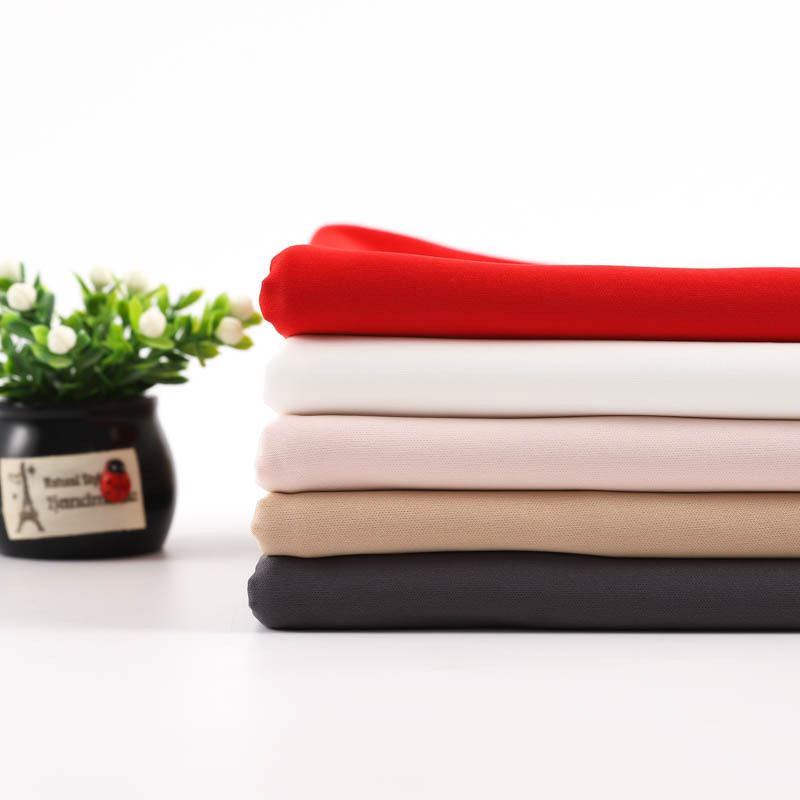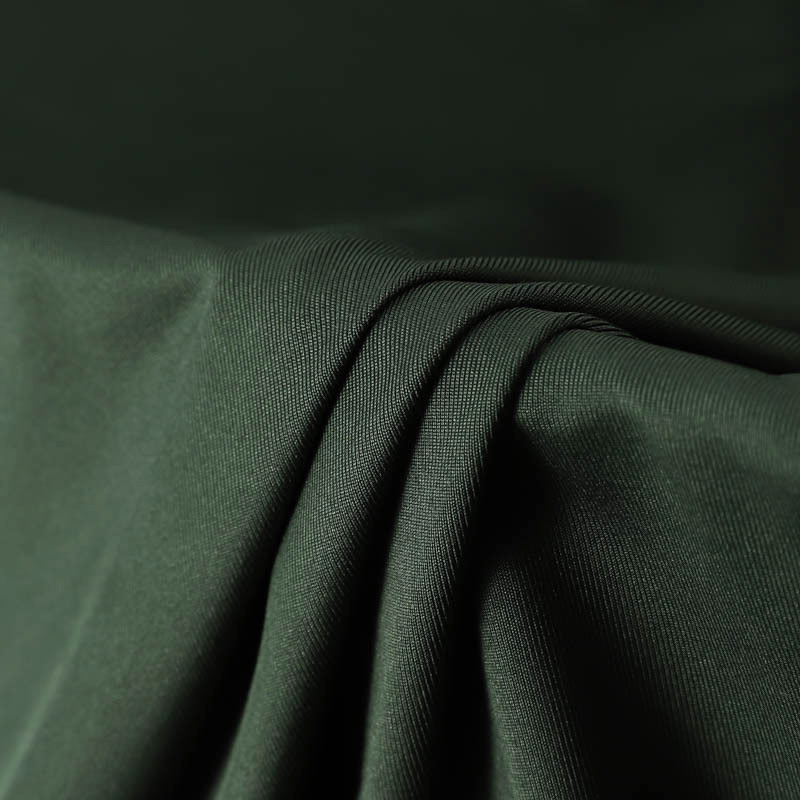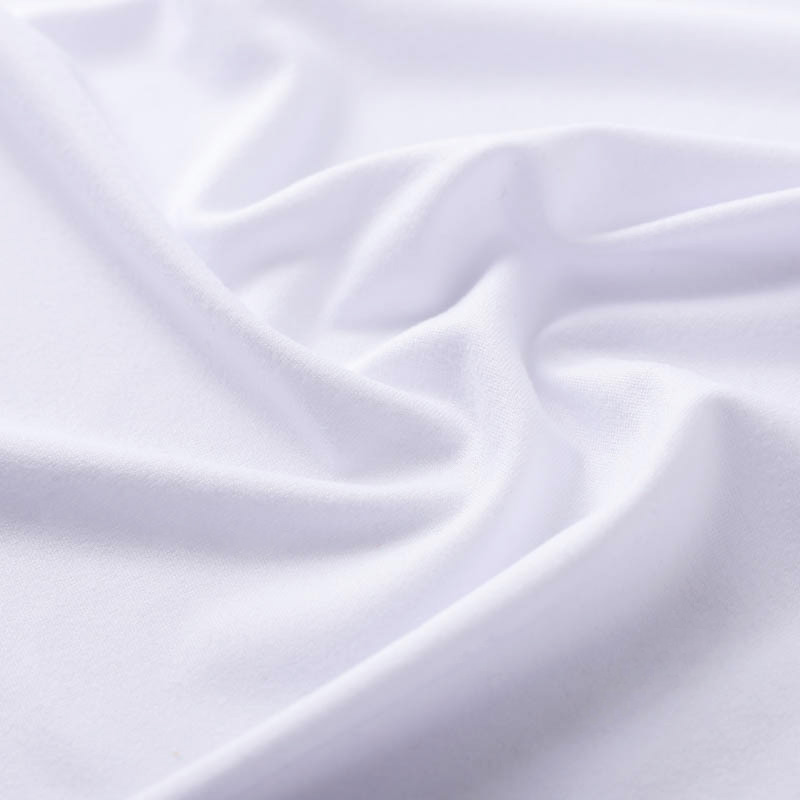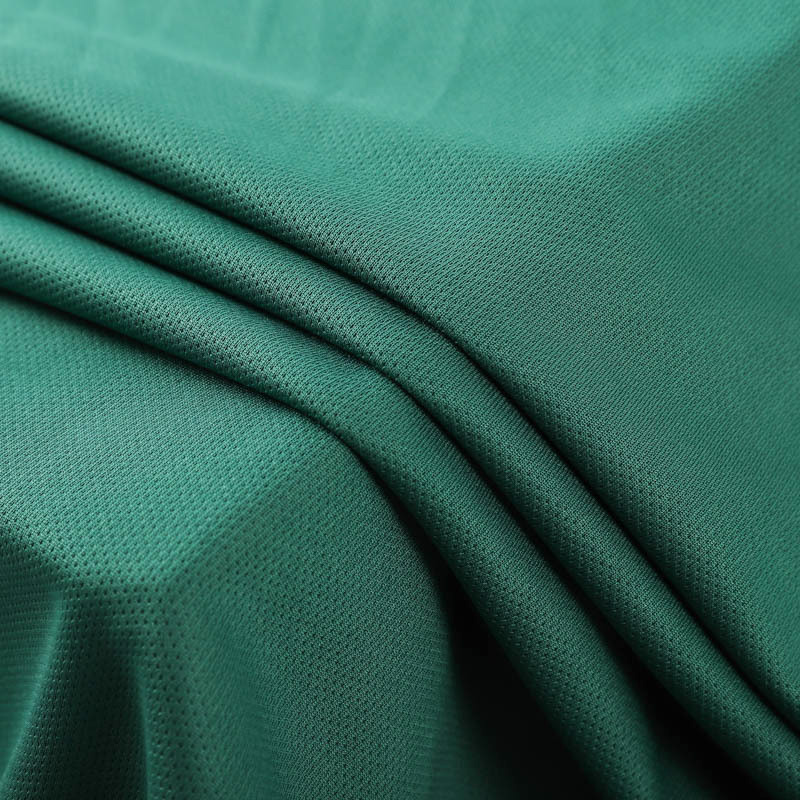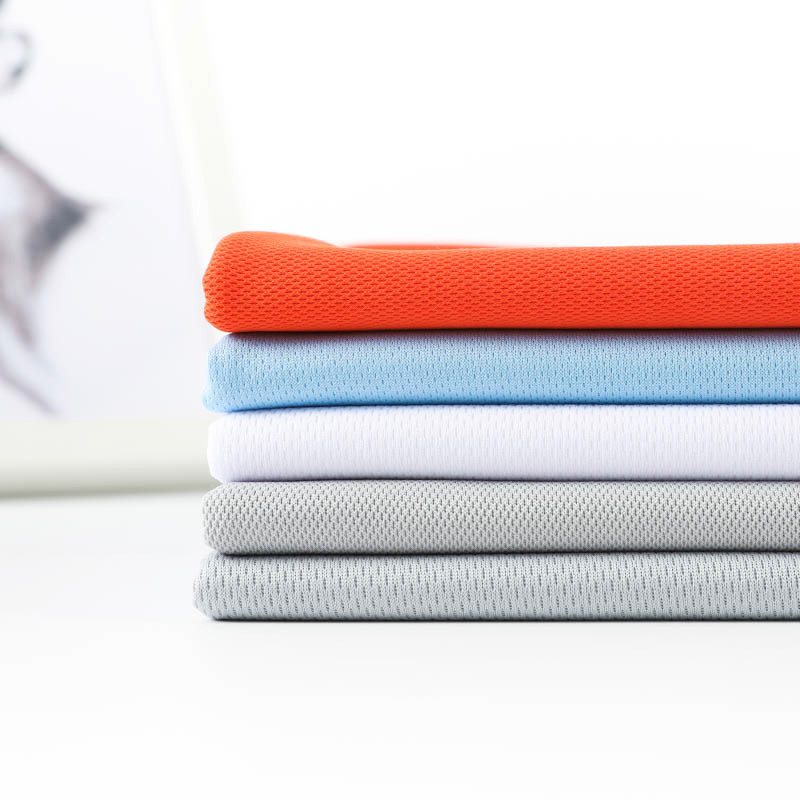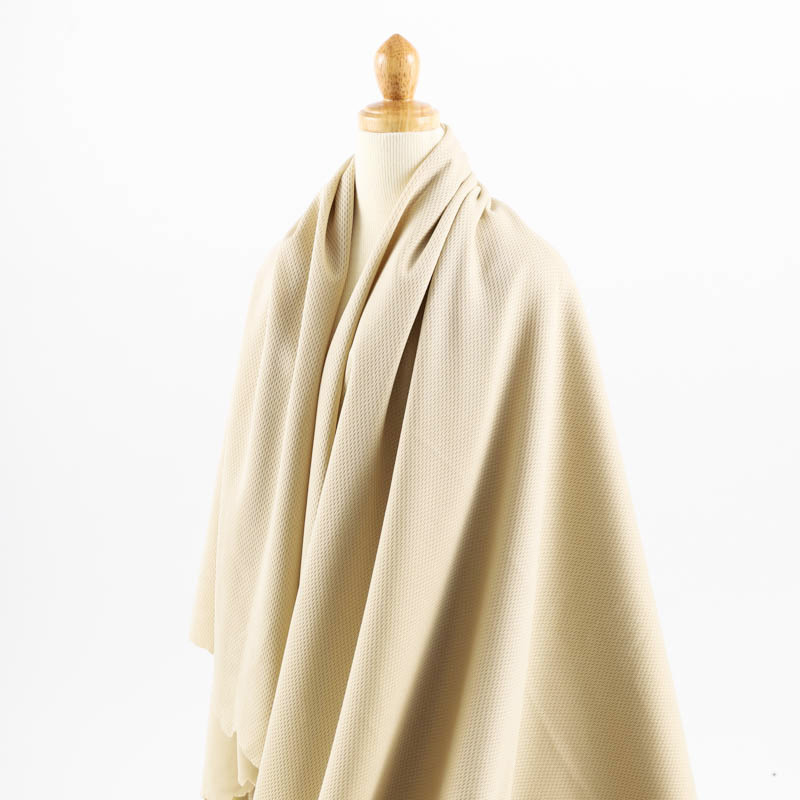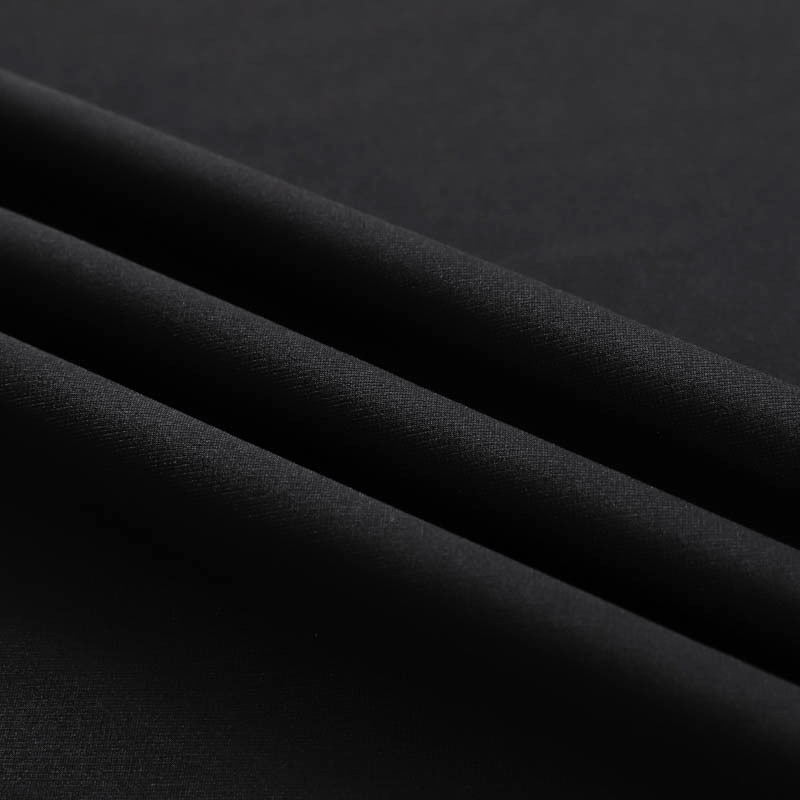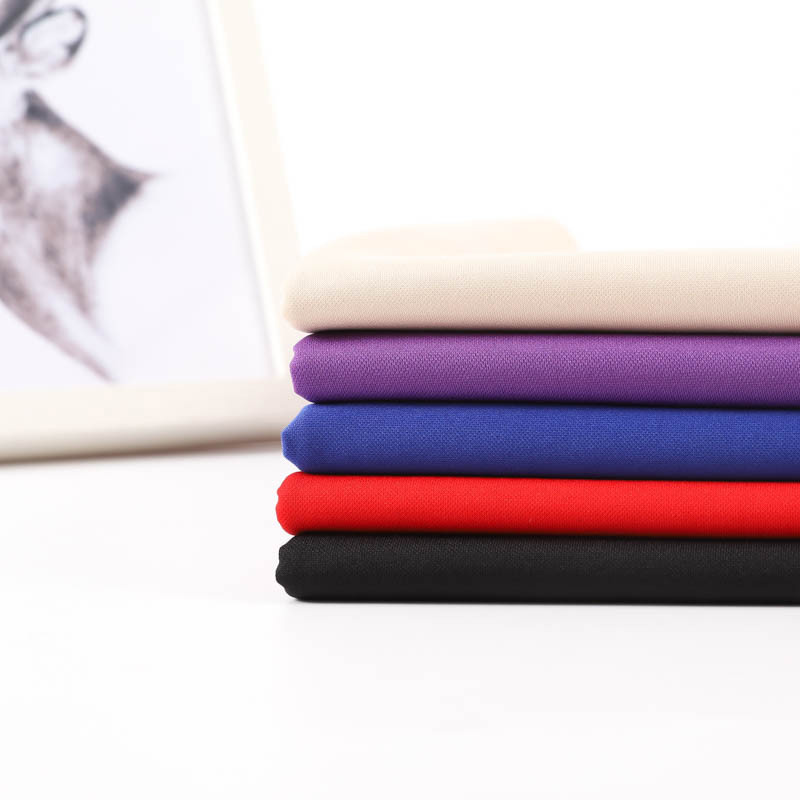Introduction
When it comes to choosing fabrics for clothing, home textiles, or even industrial applications, understanding the differences between material types can significantly impact the final product's performance, appearance, and longevity. Two of the most commonly used fabrics in the textile industry are knitted fabric and polyester fabric. While both are popular for their unique properties, each offers distinct advantages and potential drawbacks.
In this article, we’ll take an in-depth look at knitted fabric vs. polyester fabric, examining their structure, properties, uses, and care requirements. Whether you're crafting a cozy sweater, designing athletic wear, or choosing the perfect fabric for upholstery, understanding the characteristics of each material will help you make a well-informed decision. Let’s dive into a comparison of these versatile fabrics and explore which one might be right for your next project.
What is Knitted Fabric?
Knitted fabric is a textile that is created by interlocking loops of yarn using knitting needles or machines. Unlike woven fabrics, where threads are interlaced in a criss-cross pattern, knitted fabrics are made by forming loops that connect to one another, creating a structure that is both flexible and stretchable. This unique construction gives knitted fabric its signature stretch, making it a popular choice for garments that require flexibility and comfort.
There are several types of knitted fabrics, each with its own characteristics:
-
Jersey: One of the most common types of knitted fabric, jersey is lightweight, soft, and has a smooth surface. It’s often used in t-shirts, dresses, and other casual wear due to its comfortable drape.
-
Rib Knit: Rib knit fabric features alternating raised and recessed rows of knit stitches, which gives it a stretchy, elastic quality. This type is often used in cuffs, collars, and form-fitting garments like sweaters or leggings.
-
Interlock: Interlock is a type of double-knit fabric, meaning it has two layers of knitted fabric interwoven with each other. This results in a smoother texture on both sides and added durability, often used in heavier garments like skirts, dresses, and sportswear.
Knitted fabrics are particularly popular for apparel such as t-shirts, sweaters, leggings, and sportswear. They are also commonly used in home textiles like blankets, bed sheets, and pillow covers, thanks to their soft and breathable nature.
What is Polyester Fabric?
Polyester fabric is a synthetic textile made from petroleum-based fibers, primarily derived from a chemical compound called polyethylene terephthalate (PET). Known for its durability, low-maintenance qualities, and versatility, polyester is one of the most widely used fabrics in the world today. It can be woven or knitted into various textures and weights, making it suitable for a wide range of applications, from everyday clothing to industrial uses.
Polyester is often combined with natural fibers like cotton or wool to create blends that offer the best of both worlds—natural softness with enhanced durability and wrinkle resistance. Pure polyester fabrics, however, are known for their smooth texture and resistance to shrinkage, stretching, and fading.
There are several types of polyester fabrics, including:
-
Spun Polyester: This type of polyester is made from short, staple fibers spun into yarn. It has a texture that’s closer to natural fabrics, making it suitable for apparel like shirts and pants. Spun polyester offers a soft feel and more breathability than other polyester variants.
-
Textured Polyester: Textured polyester is created by altering the structure of the yarn, giving it a more elastic and crimped appearance. It’s often used for activewear, sports jerseys, and outerwear due to its stretch and moisture-wicking properties.
Polyester fabric is commonly found in apparel such as activewear, linings, outerwear, and uniforms. Additionally, it’s widely used in home textiles like curtains, bed linens, and upholstery, as well as industrial applications such as conveyor belts, due to its strength and resistance to wear.
Key Differences Between Knitted and Polyester Fabrics
When comparing knitted fabric and polyester fabric, there are several key factors to consider, ranging from their construction and properties to their appearance and care requirements. Understanding these differences will help you decide which fabric is best suited for your specific needs. Let’s break down the major distinctions between the two.
1. Fabric Construction
-
Knitted Fabric: Knitted fabrics are made by interlocking loops of yarn using needles. This structure creates a fabric that is inherently stretchy, flexible, and breathable. The loops of yarn allow the fabric to expand and contract, which is why knitted textiles are commonly used in garments like t-shirts, leggings, and activewear.
-
Polyester Fabric: Polyester, on the other hand, is a synthetic fiber produced from polymerization, and its construction can vary based on how it is processed. It is commonly woven into a tight structure, although it can also be knitted. Polyester fabrics tend to be more rigid compared to knitted fabrics, offering less stretch but greater durability.
2. Fabric Properties
-
Stretch and Recovery:
-
Knitted Fabric: One of the most notable characteristics of knitted fabric is its stretch. Because of its looped structure, knitted fabrics can stretch in multiple directions and recover well, which is ideal for garments that need to move with the body.
-
Polyester Fabric: Polyester itself is not inherently stretchable unless it is blended with spandex or elastane. However, textured polyester or polyester blends can offer some stretch, though typically not as much as knitted fabrics.
-
-
Breathability:
-
Knitted Fabric: Due to the open-loop structure, knitted fabrics tend to be more breathable, making them a comfortable choice for warmer climates or activewear.
-
Polyester Fabric: Polyester, especially when used alone, can trap heat and moisture against the skin. It is less breathable than natural fabrics but is engineered in some forms (like moisture-wicking polyester) to combat this by pulling sweat away from the body.
-
-
Durability:
-
Knitted Fabric: Knitted fabrics are generally more prone to wear and tear, as the loops of yarn can snag or unravel, leading to potential damage. However, the flexibility of the fabric often makes it resistant to wrinkles and creases.
-
Polyester Fabric: Polyester is known for its high durability and resistance to abrasion, shrinkage, and fading. It's a fabric that withstands wear and tear, making it ideal for long-lasting apparel and home textiles.
-
-
Wrinkle Resistance:
-
Knitted Fabric: While knitted fabrics generally resist wrinkles better than woven fabrics, they may still develop creases over time, especially if they are made from natural fibers like cotton.
-
Polyester Fabric: Polyester is highly wrinkle-resistant, which is one of the reasons it is favored for garments that need to maintain a polished appearance without ironing.
-
-
Moisture-Wicking Capabilities:
-
Knitted Fabric: Natural knitted fabrics, like cotton, may absorb moisture, which could lead to discomfort in active settings. However, synthetic knitted fabrics (like those made from polyester) are designed with moisture-wicking properties for better performance.
-
Polyester Fabric: Polyester is a popular choice for moisture-wicking fabrics, especially in activewear, as it pulls sweat away from the skin and helps it dry faster.
-
-
Warmth and Insulation:
-
Knitted Fabric: Knitted fabrics offer varying levels of warmth depending on their thickness and the fiber used. They provide good insulation, especially in denser, thicker weaves like interlock knits or rib knits.
-
Polyester Fabric: Polyester fabrics can provide warmth but are generally less insulating unless specifically engineered for cold-weather use. Polyester fleece, for instance, is often used for its warmth and softness in winter jackets and outerwear.
-
3. Appearance
-
Knitted Fabric: Knitted fabrics tend to have a softer, more relaxed appearance. They have a natural drape and fluidity, making them ideal for garments that need to move or stretch. The texture can vary, but they generally have a more informal, casual look.
-
Polyester Fabric: Polyester offers a smoother, shinier finish and tends to retain color well. It can have a sleek, polished appearance, which makes it suitable for both casual and formal wear, depending on how it is processed.
4. Care and Maintenance
-
Knitted Fabric:
-
Washing: Knitted fabrics, particularly those made from natural fibers, require more careful washing to avoid shrinking or stretching. Machine wash on gentle cycles and air drying are often recommended.
-
Ironing: Some knitted fabrics, especially cotton-based ones, may need ironing to smooth out wrinkles. However, synthetic knits like polyester blends usually resist wrinkles and require less maintenance.
-
-
Polyester Fabric:
-
Washing: Polyester is very low-maintenance, typically machine washable in warm water. It is resistant to shrinking and is quick-drying, making it an easy-care fabric.
-
Ironing: Most polyester fabrics do not require ironing due to their wrinkle-resistant nature. If needed, a low heat setting is usually sufficient to remove any stubborn creases.
-
| Aspect | Knitted Fabric | Polyester Fabric |
|---|---|---|
| Fabric Construction | Made by interlocking loops of yarn; flexible and stretchy structure. | Synthetic fibers (PET) processed into smooth, durable fabric. |
| Stretch and Recovery | Highly stretchable with good recovery, ideal for flexible wear. | Limited stretch unless blended with elastane; typically less flexible. |
| Breathability | More breathable due to the looped structure, great for warm weather. | Less breathable; may trap heat but can be moisture-wicking in some forms. |
| Durability | Less durable; prone to snags and stretching over time. | Very durable; resistant to abrasion, fading, and shrinkage. |
| Wrinkle Resistance | Generally resistant to wrinkles but may crease over time. | Highly wrinkle-resistant; retains shape without ironing. |
| Moisture-Wicking | Varies depending on fiber; some can absorb moisture (e.g., cotton). | Often engineered for moisture-wicking; ideal for activewear. |
| Warmth and Insulation | Offers varying warmth, with thicker knits providing more insulation. | Provides warmth, especially in fleece forms, but less insulating overall. |
| Appearance | Softer, more relaxed appearance with a natural drape. | Sleek, shiny, and smooth; retains color well. |
| Washing | Needs careful washing to avoid shrinking or stretching; gentle cycle recommended. | Easy care, machine washable, and quick-drying. |
| Ironing | May require ironing, especially for natural fiber knits. | Does not typically require ironing; low heat if needed. |
Pros and Cons
Each fabric type, whether knitted or polyester, comes with its own set of advantages and disadvantages. By weighing these pros and cons, you can make a more informed choice depending on your needs, budget, and project requirements.
Knitted Fabric
Pros:
-
Comfort: Knitted fabrics are known for their softness and comfort. The flexibility and stretch make them ideal for items that require movement, like t-shirts, leggings, and sweaters.
-
Breathability: The open-loop structure of knitted fabrics provides better air circulation, making them breathable and suitable for warmer climates or active wear.
-
Stretch and Flexibility: Knitted fabrics are inherently stretchy, offering a snug, form-fitting design that moves with the body. This makes them a great choice for activewear, casual clothing, and loungewear.
-
Versatility: Knitted fabrics can be used in a variety of applications, from fashion to home textiles, including items like blankets, pillow covers, and bedding.
Cons:
-
Snagging: Due to the looped structure, knitted fabrics are prone to snags and runs, especially when made from delicate fibers. This can affect the appearance and longevity of the fabric.
-
Durability: While comfortable, knitted fabrics are often less durable than woven fabrics. They can lose shape or stretch out of form over time, particularly with heavy use or washing.
-
Maintenance: Some knitted fabrics, especially those made from natural fibers, require more care during washing and drying. Improper handling can lead to shrinking or stretching.
Polyester Fabric
Pros:
-
Durability: Polyester is extremely durable. It resists shrinking, stretching, and fading, making it an excellent choice for items that need to withstand frequent use or heavy wear, like uniforms or outdoor gear.
-
Wrinkle Resistance: Polyester is known for its wrinkle-resistant properties, requiring minimal maintenance to stay looking fresh. This makes it ideal for garments or textiles that need to maintain a polished appearance without ironing.
-
Low Maintenance: Polyester is easy to care for, machine washable, and quick-drying. It doesn’t require special treatment and is less prone to damage in the laundry.
-
Affordability: As a synthetic fabric, polyester is typically more affordable than natural fibers, making it a cost-effective choice for mass production and budget-conscious projects.
Cons:
-
Less Breathable: Polyester is less breathable than natural fibers like cotton or wool, which can make it uncomfortable for long wear in hot weather. It can trap moisture and heat against the skin, leading to discomfort in warm environments.
-
Can Feel Less Natural: Polyester often feels less soft and natural compared to natural fibers. While it can be blended with cotton or other materials for a softer feel, pure polyester can sometimes feel stiff or plasticky.
-
Environmental Impact: Being a synthetic fabric, polyester is made from petroleum-based resources and is not biodegradable. The production process also tends to have a higher environmental impact than natural fibers.
Environmental Impact
When it comes to fabric selection, sustainability and environmental concerns are becoming increasingly important. Both knitted fabric and polyester fabric have notable environmental impacts, but they differ in their sources, production processes, and recyclability. Let’s explore the environmental considerations for each fabric type.
Knitted Fabric
The environmental impact of knitted fabrics largely depends on the fiber used. Natural fibers such as cotton, wool, or bamboo are commonly used for knitting, and each comes with its own environmental footprint.
-
Cotton: Traditional cotton farming can be resource-intensive, requiring large amounts of water and pesticides. However, organic cotton, which avoids synthetic pesticides and fertilizers, is a more sustainable alternative.
-
Wool: Wool is a renewable resource, as sheep grow new fleece each year. However, the environmental impact of wool farming, including methane emissions from livestock and land degradation, can be significant.
-
Bamboo: Bamboo is considered a sustainable material due to its fast growth rate and minimal need for water or pesticides. However, the processing of bamboo into fabric (e.g., bamboo viscose) often involves harsh chemicals, which can reduce its overall sustainability.
In terms of recyclability, natural fibers like cotton and wool can biodegrade, but synthetic blends (e.g., cotton-polyester knits) are more problematic, as synthetic fibers take longer to decompose.
Polyester Fabric
Polyester is a synthetic fabric made from petroleum-based resources, meaning its production has a higher environmental impact compared to natural fibers. Some key environmental concerns with polyester include:
-
High Energy and Water Use: The production of polyester fibers is energy-intensive and requires substantial amounts of water. Additionally, it’s derived from non-renewable resources, contributing to the depletion of fossil fuels.
-
Carbon Footprint: Polyester has a higher carbon footprint compared to natural fibers like cotton or linen. The energy-intensive production process, along with the use of petroleum-based chemicals, makes it less sustainable overall.
-
Microplastics: When polyester fabrics are washed, they release microplastics into the water system. These tiny plastic particles do not biodegrade and can contribute to environmental pollution, particularly in oceans.
Despite these drawbacks, polyester can have some positive environmental aspects:
-
Recycled Polyester: Polyester can be recycled into new fibers, reducing the need for virgin materials. Recycled polyester (often called rPET) is made from used plastic bottles or old garments, helping to reduce plastic waste and reliance on petroleum.
-
Durability and Longevity: Due to polyester’s durability and resistance to wear, garments made from polyester tend to last longer, which can reduce the frequency of replacements and contribute to a longer product lifecycle.
Recycling and Sustainability
-
Knitted Fabric: Natural knitted fabrics like cotton and wool can be composted and biodegrade, though synthetic knitted fabrics (like polyester blends) are more challenging to recycle. Upcycling and recycling options are growing, but much of the textile waste from natural fabrics still ends up in landfills.
-
Polyester Fabric: Recycling polyester is a growing practice, with initiatives aimed at creating closed-loop systems to reuse polyester fibers. However, virgin polyester production remains a significant environmental challenge due to its reliance on fossil fuels. The shift to recycled polyester has shown promise, with many brands incorporating it into their collections to reduce environmental impact.
How to Choose the Right Fabric
Choosing the right fabric depends on several factors, including the intended use, desired properties, and budget for your project. Whether you’re designing a new garment, selecting home textiles, or working on an industrial application, understanding the characteristics of different fabrics is key to making the best choice.
Here are some important considerations when choosing between knitted fabric and polyester fabric:
1. Intended Use
-
Apparel: If you’re creating activewear, sportswear, or garments that require flexibility, knitted fabrics (like jersey or rib knit) are an excellent choice due to their stretch, comfort, and breathability. They are ideal for garments that need to move with the body, such as t-shirts, leggings, and sweaters.
-
Outdoor or Durable Wear: If your project involves outerwear or uniforms, polyester fabric is a strong contender. It’s durable, moisture-resistant, and highly resistant to wrinkling, making it a good choice for items that need to stand up to frequent wear and harsh conditions. Polyester blends or textured polyester also work well for athletic wear.
-
Home Textiles: For bedding, blankets, and upholstery, both fabric types have their place. Knitted fabrics are soft and comfortable, making them perfect for cozy items like blankets and pillows. On the other hand, polyester fabrics can provide long-lasting, easy-care options for things like curtains or sofa covers.
2. Desired Properties
-
Stretch and Flexibility: If you need stretch for garments like leggings, dresses, or form-fitting apparel, knitted fabrics will offer the flexibility and comfort required. Their elasticity and recovery properties allow for greater movement.
-
Breathability: If breathability is a priority—whether you’re designing summer clothes or activewear—knitted fabrics are your best bet. Their structure allows air to circulate freely, keeping the body cooler in hot weather.
-
Durability and Low Maintenance: For items that need to endure frequent use, polyester fabric is a top choice. Polyester is highly durable, resistant to wear and tear, and easy to care for. If you’re looking for a fabric that’s low-maintenance, wrinkle-resistant, and will hold up through many washes, polyester will perform well.
-
Moisture-Wicking: If moisture-wicking properties are important—such as in sportswear, activewear, or performance apparel—polyester is often the superior option due to its moisture-managing properties. Certain knitted fabrics (like synthetic blends) can also wick moisture, but pure natural fibers tend to absorb moisture instead of wicking it away.
3. Climate and Comfort
-
Warmth: If you're designing for cooler climates or need extra insulation, thicker knitted fabrics (like interlock or rib knit) are a great option. Polyester fleece, on the other hand, is also a good choice for cold weather due to its ability to trap heat without being heavy.
-
Cooler Weather: For hotter climates, breathable knitted fabrics (especially cotton or bamboo-based knits) will provide comfort and airflow. In contrast, polyester fabrics may trap heat, though some are designed specifically for moisture control and are great for activewear or sports apparel.
4. Budget
-
Cost-Effectiveness: If you’re working within a limited budget, polyester fabric is often more affordable than high-quality natural fibers used in knitted fabrics. Polyester’s mass production and availability make it a cost-effective option for large-scale manufacturing or bulk orders.
-
Natural Fibers: If your project calls for more luxurious or high-end garments, knitted fabrics made from natural fibers (such as organic cotton, wool, or bamboo) will have a higher cost due to the raw material price and more labor-intensive production processes.
5. Aesthetic and Look
-
Casual vs. Formal: Knitted fabrics offer a more relaxed, casual look with their soft texture and natural drape. If you're making casual wear or comfortable home textiles, knitted fabrics provide a cozy feel. On the other hand, polyester has a more sleek, polished appearance that works well for both casual and formal settings—especially when blended with other fibers for specific textures or finishes.



 English
English  中文简体
中文简体 